Prospecting & Detecting
Gemstones to Die For
November 2014 by W. Dan Hausel
 Some gems can potentially poison you, make you sterile and even make you forget who you are.
Some gems can potentially poison you, make you sterile and even make you forget who you are.
The Joys of Desert Prospecting
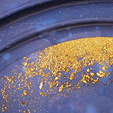 …since many miners have wandered these hills over the years, you have to sometimes be a little more creative and unconventional in your methods to hopefully find new deposits.
…since many miners have wandered these hills over the years, you have to sometimes be a little more creative and unconventional in your methods to hopefully find new deposits.
Get The Lead Out!
 If you do the math, it equates to about $1,500 of heavy metal value per three-hour dive. This is good wages, and you are doing a service to the environment by removing this toxic metal.
If you do the math, it equates to about $1,500 of heavy metal value per three-hour dive. This is good wages, and you are doing a service to the environment by removing this toxic metal.
The Batteries Metal Rush
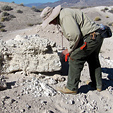 There is a major change coming in the economy of the world and now is the time for prospectors and miners to grab a ticket and get on board.
There is a major change coming in the economy of the world and now is the time for prospectors and miners to grab a ticket and get on board.
Metal Detecting Old Hard Rock Mine Dumps
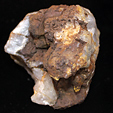 The type of mine dump that is best for metal detecting are the ones that consist of mixed sizes of rock and are located near some sort of excavation, commonly a shaft or adit. Sometimes the piles located along a trench dug by the miners can be productive as well.
The type of mine dump that is best for metal detecting are the ones that consist of mixed sizes of rock and are located near some sort of excavation, commonly a shaft or adit. Sometimes the piles located along a trench dug by the miners can be productive as well.
Detecting Clay Seams
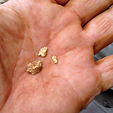 Because the old timers were so good at locating the better paying deposits—most of them along clay seams in this particular area—it makes good sense to try and locate these clay lines at old mining sites.
Because the old timers were so good at locating the better paying deposits—most of them along clay seams in this particular area—it makes good sense to try and locate these clay lines at old mining sites.
Growing Up Gold
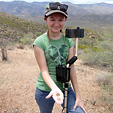 If you’re going to successfully detect nuggets you must not only know a little about finding gold and detecting, but you also need to know your own limits, have a dash of luck and a lot of persistence.
If you’re going to successfully detect nuggets you must not only know a little about finding gold and detecting, but you also need to know your own limits, have a dash of luck and a lot of persistence.
Late Fall Drywashing
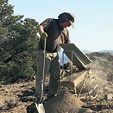 Part of the good thing about this spot is that it is not that far from my home in the famous Virginia City mining district. Not everyone knows this, but the first discoveries around that area were gold placers.
Part of the good thing about this spot is that it is not that far from my home in the famous Virginia City mining district. Not everyone knows this, but the first discoveries around that area were gold placers.
Subscription Required:
The Bawl Mill
• The Dredge Report
• Guinea Africa: Gold, Ebola, and A Monkey Barbecue
• Geobotany: Plants Associated With Mineral Deposits
• The Hunt for Remote Canyon Gold
• Why Did This Silver Mine Close? Pt II
• A Golden Summer
• California State and US National Panning Championships
• Melman on Gold & Silver
• Mining Stock Quotes and Mineral & Metal Prices
Free:
Legislative and Regulatory Update
• What Can I Do to Save My Mining Rights?







